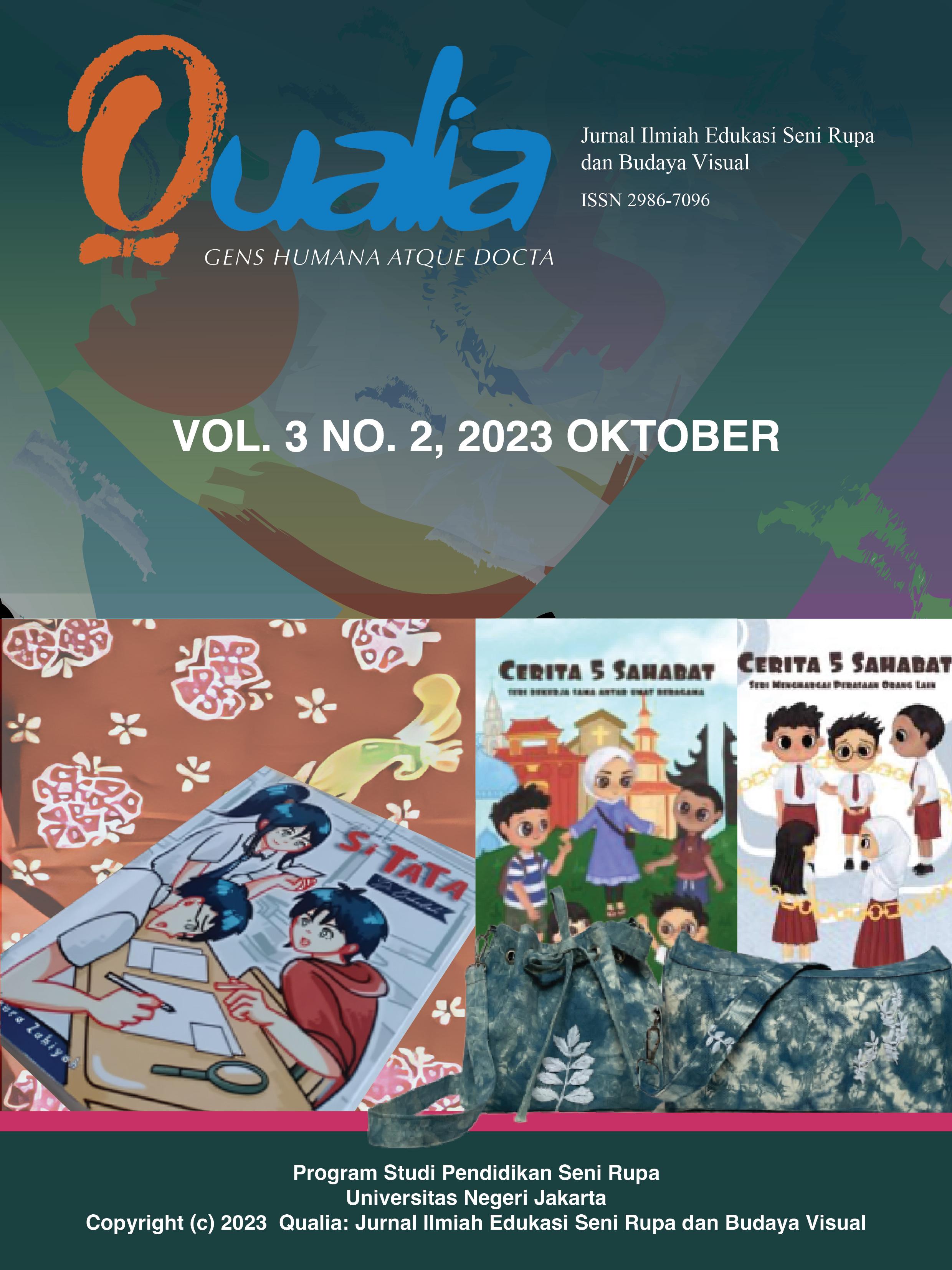Mengajarkan Nilai-Nilai Karakter Tentang Persahabatan Sebaya Kepada Anak Usia 12-14 Tahun Dengan Menggunakan Komik Strip
DOI:
https://doi.org/10.21009/qualia.32.7Keywords:
Character education, Friendship, Comic StripAbstract
This study aims to understand the social environment around children that can affect personality at the age of 12-14 years through the moral messages contained in the creation of comic strips. Introducing the value of character education in daily life through comics using digital drawing techniques. The work made into reading books is in the form of comic strips where there are stories packaged according to educational points that are easily understood and carried out by children aged 12-14 years. This comic consists of a three-strip panel model created with illustrative visualization using the artist's personal style. Using a qualitative method with a Research-led practice approach by collecting data first before the practice of creating works of art is carried out. Through the collection of observational data types, literature studies (preliminary study), interviews with expert sources (results of internships), and the results of exploration of works. Until the final results of the creation of works are implemented to the community, together with the collection of user opinion data (interviews). The work from this research has an output in the form of a comic book which is designed as an alternative media to support character education learning that can be utilized both inside and outside of school.
References
Agustriyana, N.A. (2017). Fully Human Being Pada Remaja Sebagai Pencapaian Perkembangan Identitas.
Aulia, N. (2019) Pengembangan Media Komik Strip Berbasis Multikultural untuk8 Meningkatkan Karakter Peduli Sosial dan Kemampuan Berpikir Analitis Siswa.
Bonnef, M. (1998). Komik Indonesia.
Debra J. DeWitte, Ralph M. Larmann, M. Kathryn Shields. (2018) Gateways to Art: Understanding the Visual Arts. Thames & Hudson.
Kemensos (2022) Upaya Mencegah Kenakalan Remaja Di Jakarta-https://epaper.mediaindonesia.com/detail/upaya-mencegah-kenakalan-remaja-di-jakarta
McCloud, Scott. (1993), Understanding Comics atau Memahami Komik, terjemahan S. Kinanti. (2002), KPG, Jakarta.
Maharsi, I (2011 ), Komik Dunia Keeatif Tanpa Batas, KataBuku, Yogyakarta.
Migotuwio, N. (2020) Desain Grafis: Kemarin, Kini, dan Nanti. Alinea Media Dipantara.
Rachmawati, Y. (2011) Rintisan Pengembangan Pendidikan Karakter di Satuan Pendidikan.
Susanto, Mikke. (2011). Diksi Rupa. Yogyakarta: DictiArt Lab.
Sem Conelyus Bangun dkk. (2014). Seni Budaya SMA Kelas XI Semester 1. Pusat Kurikulum dan Perbukuan, Balitbang, Kemendikbud.
Thahir, Andi (2018). Psikologi Perkembangan. Lampung: Aura Publishing.
Budikuncoroningsih, S. (2017) Pengaruh Teman Sebaya dan Persepsi Pola Asuh Orang Tua Terhadap Agresivitas Siswa di Sekolah Dasar Gugus Sugarda.
Dalmeri (2014) Pendidikan untuk Pemngembangan Karakter
Kurniawan, Y dan Sudrajat, A. (2018). Peran teman sebaya dalam pembentukan karakter siswa madrasah tsanawiyah.
Maharsi, I (2012) Penciptaan Komik Beber.
Prayoga, R (2022) Selama 2022 terdapat 323 kasus kenakalan remaja di Jakarta Selatan.https://www.antaranews.com/berita/3381300/selama-2022-terdapat-323-kasus-kenakalan-remaja-di-jakarta-selatan
Sari, V.Y. (2018) Pengaruh Interaksi Teman Sebaya Terhadap Perilaku Sosial Siswa Kelas XI IIS di SMAN 2 Pontianak.
Sari, E.N. (2019) Relevansi Dongeng Dengan Pembentukan Karakter Anak Usia Dini.
Setiawan, H (2021) Statistik Kriminalitas Provinsi Dki Jakarta 2021-https://jakarta.bps.go.id/publication/2022/10/10/78c5fb2c0930642850b4d9d1/statistik-kriminalitas-provinsi-dki-jakarta-2021.html
Downloads
Published
How to Cite
License
Copyright (c) 2025 haura zahiyah, Eko Hadi Prayitno

This work is licensed under a Creative Commons Attribution 4.0 International License.



.png)







